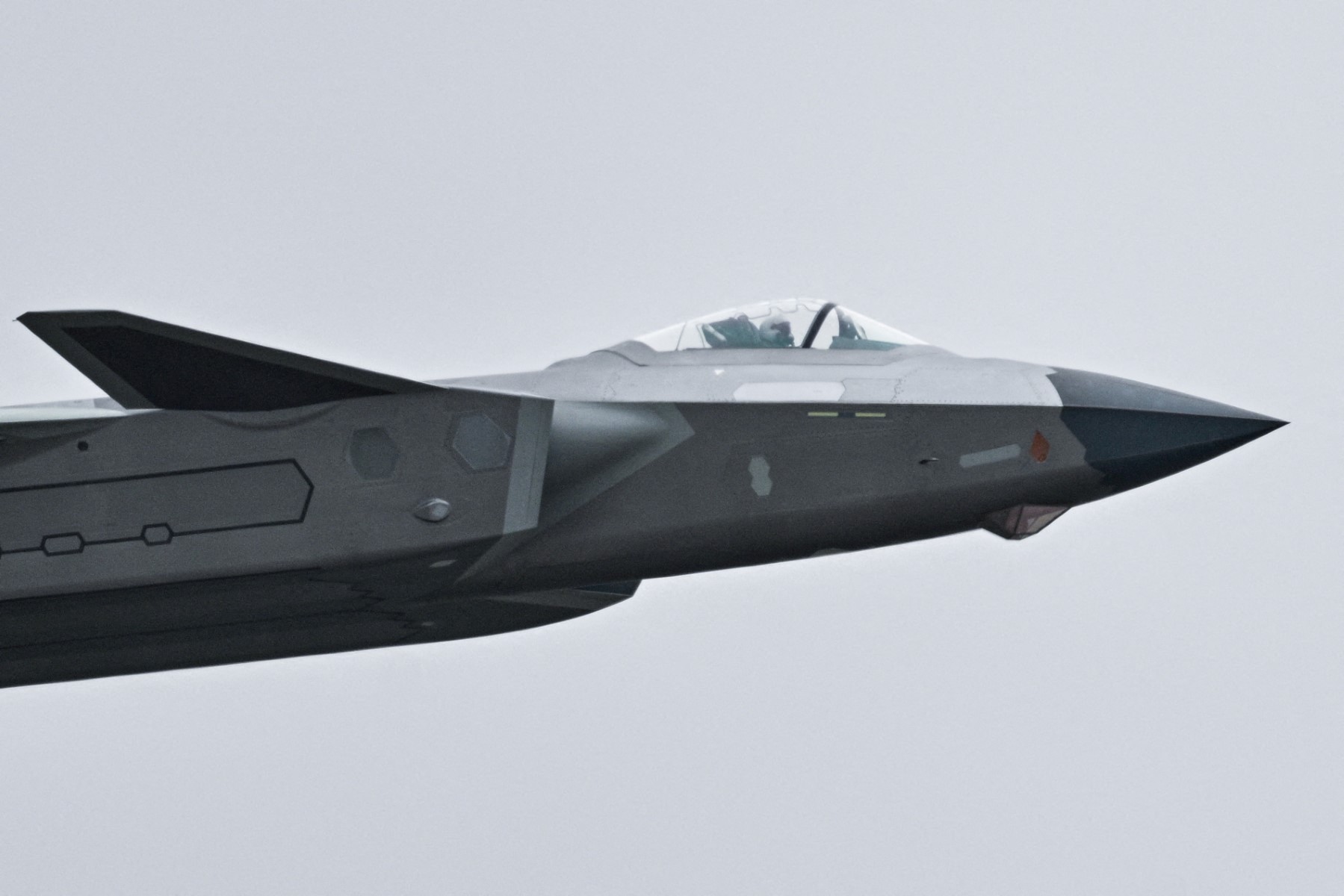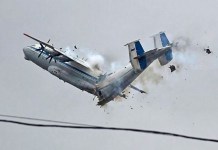For the first time, China has reportedly flown its frontline fifth-generation fighter jet, the J-20, through the strategic and heavily monitored Tsushima Strait near Japan and South Korea, and the Bashi Channel, a crucial choke-point located between the Philippines and Taiwan.
The claim made on Chinese state-run CCTV boasts that despite Beijing flying its stealth fighter jets through these heavily monitored channels, the incident was not reported by any armed forces active in the region, a not-so-subtle reference to the US, which maintains a heavy military presence in this region apart from the Korean and Japanese forces.
Though the CCTV report doesn’t explicitly mention the J-20, there were more than a few clues in the report, leaving little doubt that the aircraft in question was none other than the J-20 Mighty Dragon, China’s most advanced stealth fighter jet, which is the tip of the spear for the PLA Air Force (PLAAF).
In a series aired on July 27, state broadcaster CCTV reported that the elite air force unit, the First Fighter Brigade, now “flies missions over the Bashi Channel and Tsushima Strait, and conducts patrols around Taiwan.”
Notably, the First Fighter Brigade was the first PLAAF unit to receive the new-generation aircraft.
The report signifies that China is increasingly confident in the J-20’s stealth and its air combat capabilities.
The report is significant as it comes just days after CCTV reported a second encounter between J-20 and a foreign aircraft (again, not named by the CCTV report, but most probably the F-35).
The EurAsian Times has reported in detail about that encounter between the J-20 and the F-35, and the report can be read here.
As such, these two reports highlight the rapid modernization of the PLAAF, which is now leveraging its frontline fifth-generation stealth fighter jet, the J-20, for mid-air interceptions over China’s maritime boundary, and even for regular air patrols near adversary territory.
Mighty Dragons Near S.Korea & Japan
The Tsushima Strait is a narrow and heavily monitored waterway, separating South Korea from Japan. It is also a significant chokepoint connecting the Sea of Japan, also known as the East Sea, with the East China Sea.
Notably, this narrow channel is saturated with advanced air defense systems. According to the South China Morning Post (SCMP), the area is within the range of a dense network of US, Japanese, and South Korean radar systems, including the US THAAD anti-missile system.
THAAD is one of the US’s most advanced AD systems. To date, only eight THAAD batteries have been manufactured, of which only seven are operational. Of the seven, two are forward deployed to Israel to stave off Iranian ballistic missile threats. One THAAD battery has been sold to Saudi Arabia.
Two THAAD batteries are in the continental US, and one is deployed to Guam on a long-term basis. The seventh THAAD battery has been loaned to South Korea.
Both South Korea and Japan also operate numerous Patriot AD batteries. According to reports, South Korea operates eight Patriot batteries, while Japan has as many as 24 Patriot AD batteries.
Despite the presence of numerous radars and AD systems, China claims, the intrusion by the J-20 was not reported by any military, indicating that no radar system detected the stealth aircraft.
Chinese jets had transited through the strategic channel for the first time in 2017. Beijing flew its H-6K bombers and older J-11 fighters. However, at that time, the aircraft were monitored closely by the Japanese military, the SCMP report said.
According to the UN Convention on the Law of the Sea, the Tsushima Strait is designated for international navigation, granting aircraft “transit passage rights.” However, the strait is within the air defense identification zones (ADIZ) of both Japan and South Korea.
The Bashi Channel is a waterway located in the Luzon Strait, between the Philippines and Taiwan. It forms a key part of the sea route connecting the Pacific Ocean and the South China Sea. It is a strategically important area, particularly for maritime shipping and military operations.
Notably, both the Tsushima Strait and the Bashi Channel are strategically located and will be crucial in China’s attempts to take Taiwan.
“Our weapons, combat concepts, and personnel are all steadily improving,” Wing Commander Wang Nan of the First Fighter Brigade told CCTV. “We have made breakthroughs in integrated air combat.”
The CCTV report didn’t specify when the reported incident took place. However, the report comes amid heightened tensions between Beijing and Tokyo, as both sides recently accused each other of violating their airspace.
Earlier this month, Tokyo and Beijing traded accusations over close encounters between their warplanes in the East China Sea.

China’s Expanding J-20 Fleet
China’s deployment of the J-20 for these missions underscores Beijing’s growing assertiveness in the region and the increasing availability of the J-20.
By 2024, the People’s Liberation Army Air Force (PLAAF) had equipped 12 air brigades with J-20s, with three brigades entirely reliant on the aircraft. Production estimates range from 170 to 230 aircraft by 2023, with projections of 1,000 by the early 2030s.
A Chinese military aviation expert, Andreas Rupprecht, has noted that the J-20’s deployment across all five PLAAF theater commands by 2026 signals China’s intent to assert dominance over the Taiwan Strait and the South China Sea, as well as its emerging role as the PLAAF’s frontline fighter jet.
A Pentagon report published in December last year projected that China would have 400 J-20 fighters in operation by the end of this year, making it the world’s biggest fleet of stealth jets. China’s current production rate for J-20s is around 120 aircraft per year.
For perspective, Lockheed Martin produces nearly 150 F-35s annually. However, the F-35s are used by 19 countries, whereas China is the sole operator of the J-20.
China also operates several variants of the J-20, including the upgraded J-20A and twin-seater J-20S.
Furthermore, a 2025 breakthrough in silicon carbide (SiC) semiconductors reportedly tripled the J-20’s AESA radar detection range to 1000 km, surpassing the F-35’s 200–300 km range. They are also armed with long-range PL-15 missiles.
China recently announced that the J-20 will also be modified to carry nuclear weapons.
Notably, while China is open to exporting its fifth-generation stealth fighter jet, the J-35A, Beijing has not placed the J-20 on the export market, despite its nearly eight-year service. This clearly shows that, just like the US in the case of the F-22, China wants to keep the J-20 a closely guarded secret.




